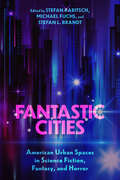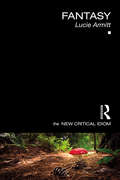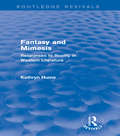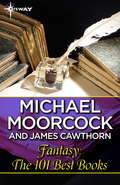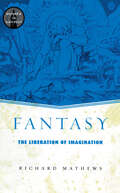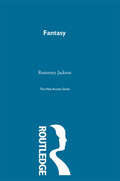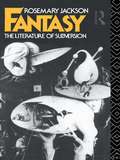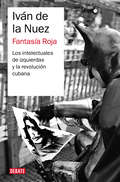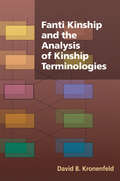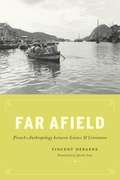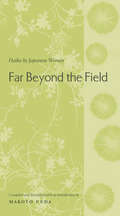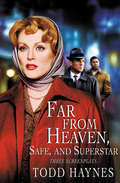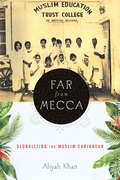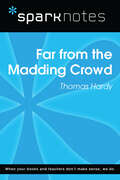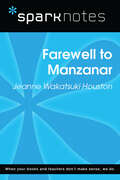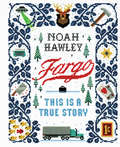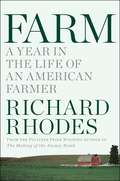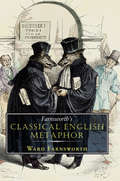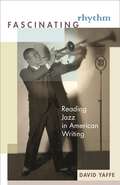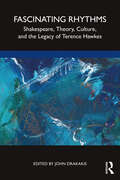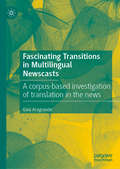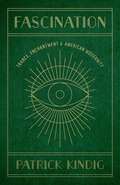- Table View
- List View
Fantastic Cities: American Urban Spaces in Science Fiction, Fantasy, and Horror
by Stefan Rabitsch, Michael Fuchs and Stefan L. BrandtContributions by Carl Abbott, Jacob Babb, Marleen S. Barr, Michael Fuchs, John Glover, Stephen Joyce, Sarah Lahm, James McAdams, Cynthia J. Miller, Fernando Gabriel Pagnoni Berns, Chris Pak, María Isabel Pérez Ramos, Stefan Rabitsch, J. Jesse Ramírez, A. Bowdoin Van Riper, Andrew Wasserman, Jeffrey Andrew Weinstock, and Robert Yeates Metropolis, Gotham City, Mega-City One, Panem’s Capitol, the Sprawl, Caprica City—American (and Americanized) urban environments have always been a part of the fantastic imagination. Fantastic Cities: American Urban Spaces in Science Fiction, Fantasy, and Horror focuses on the American city as a fantastic geography constrained neither by media nor rigid genre boundaries. Fantastic Cities builds on a mix of theoretical and methodological tools that are drawn from criticism of the fantastic, media studies, cultural studies, American studies, and urban studies. Contributors explore cultural media across many platforms such as Christopher Nolan’s Dark Knight Trilogy, the Arkham Asylum video games, the 1935 movie serial The Phantom Empire, Kim Stanley Robinson’s fiction, Colson Whitehead’s novel Zone One, the vampire films Only Lovers Left Alive and A Girl Walks Home Alone at Night, Paolo Bacigalupi’s novel The Water Knife, some of Kenny Scharf’s videos, and Samuel Delany’s classic Dhalgren. Together, the contributions in Fantastic Cities demonstrate that the fantastic is able to “real-ize” that which is normally confined to the abstract, metaphorical, and/or subjective. Consequently, both utopian aspirations for and dystopian anxieties about the American city become literalized in the fantastic city.
Fantasy (The New Critical Idiom)
by Lucie ArmittFantasy provides an invaluable and accessible guide to the study of this fascinating field. Covering literature, film, television, ballet, light opera and visual art and featuring a historical overview from Ovid to the Toy Story franchise, this book takes the reader through the key landmark moments in the development of fantasy criticism. This comprehensive guide examines fantasy and politics, fantasy and the erotic, quest narratives and animal fantasy for children. The versatility and cultural significance of fantasy is explored, alongside the important role fantasy plays in our understanding of ‘the real’, from childhood onwards. Written in a clear, engaging style and featuring an extensive glossary of terms, this is the essential introduction to Fantasy.
Fantasy and Mimesis: Responses to Reality in Western Literature (Routledge Revivals)
by Kathryn HumeSince Plato and Aristotle’s declaration of the essence of literature as imitation, western narrative has been traditionally discussed in mimetic terms. Marginalized fantasy- the deliberate from reality – has become the hidden face of fiction, identified by most critics as a minor genre. First published in 1984, this book rejects generic definitions of fantasy, arguing that it is not a separate or even separable strain in literary practice, but rather an impulse as significant as that of mimesis. Together, fantasy and mimesis are the twin impulses behind literary creation. In an analysis that ranges from the Icelandic sagas to science fiction, from Malory to pulp romance, Kathryn Hume systematically examines the various ways in which fantasy and mimesis contribute to literary representations of reality. A detailed and comprehensive title, this reissue will be of particular value to undergraduate literature students with an interest in literary genres and the centrality of literature to the creative imagination.
Fantasy and the Real World in British Children's Literature: The Power of Story (Children's Literature and Culture)
by Caroline WebbThis study examines the children’s books of three extraordinary British writers—J.K. Rowling, Diana Wynne Jones, and Terry Pratchett—and investigates their sophisticated use of narrative strategies not only to engage children in reading, but to educate them into becoming mature readers and indeed individuals. The book demonstrates how in quite different ways these writers establish reader expectations by drawing on conventions in existing genres only to subvert those expectations. Their strategies lead young readers to evaluate for themselves both the power of story to shape our understanding of the world and to develop a sense of identity and agency. Rowling, Jones, and Pratchett provide their readers with fantasies that are pleasurable and imaginative, but far from encouraging escape from reality, they convey important lessons about the complexities and challenges of the real world—and how these may be faced and solved. All three writers deploy the tropes and imaginative possibilities of fantasy to disturb, challenge, and enlarge the world of their readers.
Fantasy: The 101 Best Books
by Michael Moorcock James CawthornFantasy is one of the most appealing and yet most puzzling of literary genres. Appealing because it can offer dreams, the fulfillment of wishes, and escape; but puzzling because it spans such a wide and diverse range of books. In Fantasy: The 100 Best Books, James Cawthorn and Michael Moorcock present a wide-ranging cross-section of the fantasy genre, from its eighteenth century Gothic origins through nineteenth century literary classics, pulp-era weird fiction, and on to modern favorites. Recognized classics are accompanied by lesser-known works ripe for rediscovery, resulting in an interestingly idiosyncratic and uniquely valuable guide to two-and-a-half centuries of fantastic stories.
Fantasy: The Liberation of Imagination (Studies In Literary Themes And Genres #Vol. 16)
by Richard MathewsUsing a broad definition of fantasy to include myth, folklore, legend and fairy tale, this survey of the genre will entice as well as inform any student interested in the mysterious, mystical or magical. Beloved authors like J. R. R. Tolkien, Ursula K. Le Guin, William Morris and Robert E. Howard are examined closely.
Fantasy: The Literature Of Subversion (New Accents Ser.)
by Rosemary JacksonFirst Published in 2002. Routledge is an imprint of Taylor & Francis, an informa company.
Fantasy: The Literature of Subversion (New Accents)
by Dr Rosemary JacksonThis study argues against vague interpretations of fantasy as mere escapism and seeks to define it as a distinct kind of narrative. A general theoretical section introduces recent work on fantasy, notably Tzventan Todorov's The Fantastic: A Structural Approach to a Literary Genre (1973). Dr Jackson, however, extends Todorov's ideas to include aspects of psychoanalytical theory. Seeing fantasy as primarily an expression of unconscious drives, she stresses the importance of the writings of Freud and subsequent theorists when analysing recurrent themes, such as doubling or multiplying selves, mirror images, metamorphosis and bodily disintegration.^l Gothic fiction, classic Victorian fantasies, the 'fantastic realism' of Dickens and Dostoevsky, tales by Mary Shelley, James Hogg, E.T.A. Hoffmann, George Eliot, Henry James, Joseph Conrad, R.L. Stevenson, Franz Kafka, Mervyn Peake and Thomas Pynchon are among the texts covered. Through a reading of thse frequently disquieting works, Dr Jackson moves towards a definition of fantasy expressing cultural unease. These issues are discussed in relation to a wide range of fantasies with varying images of desire and disenchantment.
Fantasía roja
by Iván de NuezUn repaso ácido e inteligente a la visión de muchos intelectuales europeos y americanos por el gobierno de Fidel Castro. ¿Qué tienen en común Jean-Paul Sartre y Oliver Stone, Régis Debray y Sydney Pollack, el músico Ry Cooder, que dio a conocer Buena Vista Social Club, y el director de cine Richard Lester, que dirigió a los Beatles, Giangiacomo Feltrinelli y Max Aub, Graham Greene y David Byrne? Además de ser o haber sido, cada uno a su manera y condición, reconocidos iconos intelectuales de la izquierda occidental, estos ilustres personajes han compartido su pasión por la Revolución cubana. A desentrañar las causas, profundas o banales, de esa pasión está dedicado Fantasía roja, un ensayo personal escrito con tanta profundidad conceptual como sentido del humor. Desde la filosofía o la música, la novela o el cine, el fuego y la ruina, el turismo y los desvencijados Cadillac, la teoría y la calle, este estudio indaga los misterios de esa fantasía y propone un debate sobre qué cabría esperar de una izquierda renovada para el siglo XXI.
Fanti Kinship and the Analysis of Kinship Terminologies
by David B. KronenfeldThis book examines Fanti kinship terminology from a variety of analytic and formal perspectives. Based on work with a broad number of informants, David B. Kronenfeld details and analyzes internal variation in usage within the Fanti community, shows the relationship between terminology and social groups and communicative usage, and relates these findings to major theoretical work on kinship and on the intersections of language, thought, and culture. The terminological analysis in this study employs a great variety of formal approaches, assesses the strengths and weaknesses of each approach, and covers a wide range of types of usage. This work also performs a systematic, formal analysis of behavior patterns among kin, joining this approach with the analysis of a kinship terminological system. Rather than treating kinship terminology as a special, isolated piece of culture, this study also ties its analysis to more general semantic and cultural theoretical issues. Including computational and comparative studies of kinship terminologies, this volume represents the fullest analysis of any kinship terminological system in the ethnographic record.
Far Afield: French Anthropology between Science and Literature
by Vincent Debaene translated by Justin IzzoAnthropology has long had a vexed relationship with literature, and nowhere has this been more acutely felt than in France, where most ethnographers, upon returning from the field, write not one book, but two: a scientific monograph and a literary account. In Far Afield#151;brought to English-language readers here for the first time#151;Vincent Debaene puzzles out this phenomenon, tracing the contours of anthropology and literature’s mutual fascination and the ground upon which they meet in the works of thinkers from Marcel Mauss and Georges Bataille to Claude Lévi-Strauss and Roland Barthes. The relationship between anthropology and literature in France is one of careful curiosity. Literary writers are wary about anthropologists’ scientific austerity but intrigued by the objects they collect and the issues they raise, while anthropologists claim to be scientists but at the same time are deeply concerned with writing and representational practices. Debaene elucidates the richness that this curiosity fosters and the diverse range of writings it has produced, from Proustian memoirs to proto-surrealist diaries. In the end he offers a fascinating intellectual history, one that is itself located precisely where science and literature meet.
Far Beyond the Field: Haiku by Japanese Women
by Makoto UedaFar Beyond the Field is a first-of-its-kind anthology of haiku by Japanese women, collecting translations of four hundred haiku written by twenty poets from the seventeenth century to the present. By arranging the poems chronologically, Makoto Ueda has created an overview of the way in which this enigmatic seventeen-syllable form has been used and experimented with during different eras. At the same time, the reader is admitted to the often marginalized world of female experience in Japan, revealing voices every bit as rich and colorful, and perhaps even more lyrical and erotic, than those found in male haiku.
Far Beyond the Field: Haiku by Japanese Women (Translations From The Asian Classics Ser.)
by Ed. Ueda MakotoFar Beyond the Field is a first-of-its-kind anthology of haiku by Japanese women, collecting translations of four hundred haiku written by twenty poets from the seventeenth century to the present. By arranging the poems chronologically, Makoto Ueda has created an overview of the way in which this enigmatic seventeen-syllable form has been used and experimented with during different eras. At the same time, the reader is admitted to the often marginalized world of female experience in Japan, revealing voices every bit as rich and colorful, and perhaps even more lyrical and erotic, than those found in male haiku.Listen, for instance, to Chiyojo, who worked in what has been long thought of as the dark age of haiku during the eighteenth century, but who composed exquisitely fine poems tracing the smallest workings of nature. Or Katsuro Nobuko, who wrote powerfully erotic poems when she was widowed after only two years of marriage. And here, too, is a voice from today, Mayuzumi Madoka, whose meditations on romantic love represent a fresh new approach to haiku.
Far Country: Scenes from American Culture
by Franco MorettiThe influential and controversial critic takes literary history out of the classroom and into the publicIn the field of literary history and theory, Franco Moretti is synonymous with innovation. The cofounder of the Stanford Literary Lab, he brought quantitative methods into the study of the novel, enabling a “distant” reading that uses computation to analyze literary production over centuries. But at the same time, he was also teaching undergraduates the history of literature. Knowing Moretti, it’s no surprise that he didn’t teach the course the accepted way: one author after another, in a long uninterrupted chain. Instead, he put an irregular chessboard in front of his students that was too strange to be taken for granted. Literary history had become a problem, and he offered a solution.In Far Country, Moretti take these lectures out of the classroom and lets us share in the passion and excitement that comes from radical critique. Unconstrained by genre, Moretti juxtaposes Whitman and Baudelaire, the Western and film noir, even Rembrandt and Warhol, illuminating each through their opposition. With his guidance, we revel in the process of transformation—the earthquakes that shook the “how” of artistic form—and begin to shape a new view on American culture.Bracing in its insight and provocative in its conclusions, Far Country is a critical look at the development of American cultural hegemony.
Far From Heaven, Safe, and Superstar: Three Screenplays
by Todd HaynesThree acclaimed screenplays from one of today’s most provocative filmmakers, including the Oscar nominated screenplay Far from Heaven. An award-winning auteur and a pioneer of the New Queer Cinema movement, Todd Haynes has achieved both critical acclaim and box office success with his original, intelligent, and often controversial films. Collected here are three of his most celebrated screenplays. Far from Heaven: Winning fifty critics’ prizes and appearing on two hundred Top Ten lists, Far from Heaven was also nominated for four Academy Awards. Inspired by the films of Douglas Sirk, it tells the story of a 1950s housewife who is alienated by her neighbors when she pursues an affair with her African American gardener after learning of her husband’s homosexuality. Safe: Haynes’s breakthrough feature was voted Best Film of the 1990s by the Village Voice Film Critics Poll. It tells the disturbing story of an affluent suburban housewife whose life is shattered by a mysterious illness. One character suggests that perhaps she is “allergic to the twentieth century.” Superstar: The Karen Carpenter Story: Told with a cast of Barbie dolls, this short film about Karen Carpenter’s battle with anorexia was named one of Entertainment Weekly’s Top 50 Cult Movies in 2003. Though the film was ordered destroyed after a lawsuit by the Carpenter estate, it remains an underground classic and “the most talked-about, least-seen film of the ’80s” (The A.V. Club).
Far from Mecca: Globalizing the Muslim Caribbean (Critical Caribbean Studies)
by Aliyah KhanFar from Mecca: Globalizing the Muslim Caribbean is the first academic work on Muslims in the English-speaking Caribbean. Khan focuses on the fiction, poetry, and music of Islam in Guyana, Trinidad, and Jamaica. Combining archival research, ethnography, and literary analysis, Khan argues for a historical continuity of Afro- and Indo-Muslim presence and cultural production in the Caribbean. Case studies explored range from Arabic-language autobiographical and religious texts written by enslaved Sufi West Africans in nineteenth-century Jamaica, to early twentieth-century fictions of post-indenture South Asian Muslim indigeneity and El Dorado, to the attempted government coup in 1990 by the Jamaat al-Muslimeen in Trinidad, as well as the island’s calypso music, to contemporary judicial cases concerning Caribbean Muslims and global terrorism. Khan argues that the Caribbean Muslim subject, the “fullaman,” a performative identity that relies on gendering and racializing Islam, troubles discourses of creolization that are fundamental to postcolonial nationalisms in the Caribbean.
Far from the Madding Crowd (SparkNotes Literature Guide Series)
by SparkNotesFar from the Madding Crowd (SparkNotes Literature Guide) by Thomas Hardy Making the reading experience fun! Created by Harvard students for students everywhere, SparkNotes is a new breed of study guide: smarter, better, faster.Geared to what today's students need to know, SparkNotes provides:chapter-by-chapter analysis explanations of key themes, motifs, and symbols a review quiz and essay topics Lively and accessible, these guides are perfect for late-night studying and writing papers.
Farewell to Manzanar (SparkNotes Literature Guide Series)
by SparkNotesFarewell to Manzanar (SparkNotes Literature Guide) by Jeanne Wakatsuki Houston Making the reading experience fun! Created by Harvard students for students everywhere, SparkNotes is a new breed of study guide: smarter, better, faster.Geared to what today's students need to know, SparkNotes provides:chapter-by-chapter analysis explanations of key themes, motifs, and symbols a review quiz and essay topics Lively and accessible, these guides are perfect for late-night studying and writing papers.
Fargo: This Is a True Story
by Noah HawleyThe making of the acclaimed, award-winning TV show told exactly as it occurred.From bestselling, Edgar Award-winning author Noah Hawley (Before the Fall) comes the perfect collector's item to the hit TV show based on the film Fargo. This companion to the first three seasons of Fargo, which Hawley created and executive produced, is packed with script selections-including all three pilots-candid, behind-the-scenes photography, exclusive interviews with cast and crew, and much, much more.Learn about what makes Lorne Malvo tick in a fascinating conversation with Billy Bob Thornton. Discover Kirsten Dunst's and Jesse Plemons's favorite scenes. Find out what it was like for Ewan McGregor to play both Stussy brothers. Hear from Patrick Wilson, Carrie Coon, Mary Elizabeth Winstead, and many others as Hawley, in this gorgeous, illuminating journey, takes you behind the curtain to reveal the making of one of the best shows on television.
Farm
by Richard RhodesPulitzer Prize winning author, Richard Rhodes's year-long journey into the heart of American agriculture reveals a life trapped between two eras: the modern and the traditional, the future and the past.Richly textured and deeply moving, Farm chronicles a year in the life of Tom and Sally Bauer of Crevecoeur County, Missouri, who cultivate nearly two square miles of the surface of the earth. They struggle to build up their farm, harvesting corn, birthing calves, planting wheat, coping with the vagaries of nature and government regulations. Required of them are ancient skills (an attunement to the weather, animals, crops, and land) as well as a mastery of modern technology, from high-tech machinery to genetics and sophisticated chemicals. Written with honesty and insight, Farm is a revelatory exploration of farm life in the 20th century and the joys and challenges of the modern rural landscape.
Farnsworth's Classical English Metaphor
by Ward FarnsworthFarnsworth's Classical English Rhetoric was the definitive guide to the use of rhetorical devices in English. It became a best-seller in its field, with over 20,000 copies in print. Here now is the natural sequel, Farnsworth's Classical English Metaphor--the most entertaining and instructive book ever written about the art of comparison. A metaphor compares two things that seem unalike. Lincoln was a master of the art (A house divided against itself cannot stand). So were Jefferson (The tree of liberty must be refreshed from time to time with the blood of patriots and tyrants) and Shakespeare (All the world's a stage/And all the men and women merely players). Farnsworth's book is the finest collection of such figurative comparisons ever assembled. It offers an original analysis of patterns in the sources and uses of metaphor. It also explains the different stylistic ways that comparisons can be written, and with what effects. The book starts by dividing the sources of metaphor into families, including nature, architecture, animals, and myth. It then shows how the best writers have put each of those traditions to distinctive use-for the sake of caricature, to make an abstract idea visible, to make a complicated idea simple. The book provides, along the way, an extraordinarily wide-ranging tour of examples from novelists, playwrights, philosophers, and orators. There is interest, instruction, and amusement to be found on every page. Ward Farnsworth-lawyer, dean, teacher, and polymath-has produced another indispensable book for the writer. Classical English Metaphor will be a constant source of learning and enjoyment for anyone who appreciates the art of observation and the pleasure of well-chosen words.
Fascinating Rhythm: Reading Jazz in American Writing
by David YaffeHow have American writers written about jazz, and how has jazz influenced American literature? In Fascinating Rhythm, David Yaffe explores the relationship and interplay between jazz and literature, looking at jazz musicians and the themes literature has garnered from them by appropriating the style, tones, and innovations of jazz, and demonstrating that the poetics of jazz has both been assimilated into, and deeply affected, the development of twentieth-century American literature. Yaffe explores how Jewish novelists such as Norman Mailer, J. D. Salinger, and Philip Roth engaged issues of racial, ethnic, and American authenticity by way of jazz; how Ralph Ellison's descriptions of Louis Armstrong led to a "neoconservative" movement in contemporary jazz; how poets such as Wallace Stevens, Hart Crane, Langston Hughes, and Frank O'Hara were variously inspired by the music; and how memoirs by Billie Holiday, Charles Mingus, and Miles Davis both reinforced and redeemed the red light origins of jazz. The book confronts the current jazz discourse and shows how poets and novelists can be placed in it--often with problematic results. Fascinating Rhythm stops to listen for the music, demonstrating how jazz continues to speak for the American writer.
Fascinating Rhythms: Shakespeare, Theory, Culture, and the Legacy of Terence Hawkes
by John DrakakisAs one of the most adventurous literary and cultural critics of his generation, Terence Hawkes’ contributions to the study of Shakespeare and the development of literary and cultural theory have been immense. His work has been instrumental in effecting a radical shift in the study of Shakespeare and of literary studies. This collection of essays by some of his closest colleagues, friends, peers, and mentees begins with an introduction by John Drakakis, outlining the profound impact that Hawkes’ work had on various areas of literary studies. It also includes a poem by Christopher Norris, who worked with Hawkes for many years at the University of Cardiff, as well as work on translation, social class, the historicist and presentist exploration of Shakespearean texts, and teaching Shakespeare in prisons. The volume features essays by former students who have gone on to establish reputations in areas beyond the study of literature, and who have contributed ground-breaking volumes to the pioneering New Accents series. It concludes with Malcolm Evans’ innovative account of the migration of semiotics into the area of business. This book is a vibrant and informative read for anyone interested in Hawkes’ unique blend of literary and cultural theory, criticism, Shakespeare studies, and presentism.
Fascinating Transitions in Multilingual Newscasts: A corpus-based investigation of translation in the news
by Gaia AragrandeThis book combines methods including Critical Discourse Analysis (CDA), Corpus Linguistics and comparative analysis in order to grasp the complexities and ramifications of multilingual broadcasting journalism in different national and supranational contexts. Starting with the idea that both journalism and translation are multi-layered objects and may conceal power dynamics and struggles within society, the author uses a theoretical and methodological convergence framework to analyse examples from Italy, the UK and Europe, as well as calling for larger and more systematic studies about language transfer activities in the news. This book will be of interest to students and scholars of translation, corpus linguistics, journalism and CDA.
Fascination: Trance, Enchantment, and American Modernity
by Patrick KindigMost cultural critics theorize modernity as a state of disenchanted distraction, one linked to both the rationalizing impulses of scientific and technological innovation and the kind of dispersed, fragmented attention that characterizes the experience of mass culture. Patrick Kindig’s Fascination, however, tells a different story, showing that many fin-de-siècle Americans were in fact concerned about (and intrigued by) the modern world’s ability to attract and fix attention in quasi-supernatural ways. Rather than being distracting, modern life in their view had an almost magical capacity to capture attention and overwhelm rational thought.Fascination argues that, in response to the dramatic scientific and cultural changes of the late nineteenth and early twentieth centuries, many American thinkers and writers came to conceive of the modern world as fundamentally fascinating. Describing such diverse phenomena as the electric generator, the movements of actresses, and ethnographic cinema as supernaturally alluring, they used the language of fascination to process and critique both popular ideologies of historical progress and the racializing logic upon which these ideologies were built. Drawing on an archive of primary texts from the fields of medicine, (para)psychology, philosophy, cultural criticism, and anthropology—as well as creative texts by Harriet Prescott Spofford, Charles Chesnutt, Theodore Dreiser, Paul Laurence Dunbar, Edward S. Curtis, Robert J. Flaherty, and Djuna Barnes—Kindig reconsiders what it meant for Americans to be (and to be called) modern at the turn of the twentieth century.
